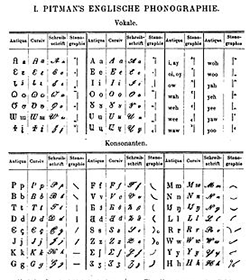
The Lost Art of Stenography: Understanding the Language of Symbols
In today’s fast-paced digital world, shorthand writing and stenography are considered by many to be outdated skills. However, the art of stenography, also known as shorthand, is still relevant and incredibly useful in certain professions. Stenography, which involves using symbols and abbreviated forms of writing to record spoken language, has been practiced for centuries and has played a crucial role in the fields of law, journalism, and business. In this article, we will delve into the history of stenography, explore its relevance in modern times, and discuss the significance of understanding the language of symbols.
A Brief History of Stenography
Stenography has a rich history that dates back to ancient times. The practice of shorthand writing can be traced to the Ancient Greeks and Romans who developed various systems of shorthand to aid in recording spoken language quickly and efficiently. However, it was not until the 17th century that stenography gained widespread popularity with the introduction of new shorthand systems such as Thomas Shelton’s “Tachygraphy.”
In the 19th century, stenography became an essential skill for professionals, particularly in the legal and journalism fields. Many stenographers were employed in courtrooms and newsrooms to transcribe speeches, testimonies, and interviews. Stenography continued to evolve with the invention of new shorthand systems, including the Pitman, Gregg, and Teeline methods, which are still used today in various parts of the world.
The Rise of Technology and the Decline of Stenography
With the advent of modern technology and digital transcription tools, the demand for stenographers has significantly decreased. Voice recognition software and digital recording devices have replaced the need for human stenographers in many settings. As a result, the art of stenography has been largely overlooked and undervalued.
However, despite the decline in demand for traditional stenographers, the skill of shorthand writing remains relevant and essential in certain professions. Court reporters, transcribers, and journalists still rely on shorthand to accurately and efficiently record spoken language. Additionally, stenography can be a valuable skill for those seeking careers in the legal and medical fields, where the ability to transcribe content quickly and accurately is highly valued.
Understanding the Language of Symbols
Stenography is based on the use of symbols and abbreviated forms of writing to represent words and phrases. By mastering shorthand, one can condense spoken language into a series of symbols and strokes, resulting in a more efficient and organized method of transcription. The language of symbols in stenography allows for rapid note-taking and transcription, making it an invaluable skill in settings where real-time recording is required.
The ability to understand and interpret shorthand symbols is also essential for those working in the legal and medical fields. Lawyers and paralegals often rely on shorthand to transcribe court proceedings and depositions, while medical professionals use stenography to record patient consultations and treatment plans. The language of symbols in shorthand enables professionals to document important information quickly and accurately, ensuring that no critical details are missed or misinterpreted.
The Importance of Stenography in Today’s World
In our digital age, the art of stenography is often overshadowed by modern transcription tools and software. However, stenography remains a valuable skill that offers several advantages over digital transcription methods. Shorthand writing allows for real-time transcription, making it ideal for situations where immediate and accurate recording is necessary. Additionally, stenography is a more personalized and precise method of note-taking, as it involves the interpretation of spoken language through symbols and strokes.
Stenography also fosters active listening and concentration, as the stenographer must focus on the spoken word and quickly translate it into shorthand symbols. This level of engagement and attentiveness is essential for capturing the nuances and intricacies of spoken language, making shorthand a valuable tool for professionals who require accurate and comprehensive transcriptions.
Furthermore, stenography offers a level of privacy and security that digital transcription tools cannot provide. With the growing concerns over data privacy and security, handwritten shorthand notes can provide a more secure method of transcribing sensitive information, as they are not vulnerable to hacking or digital breaches.
The Future of Stenography
While the demand for traditional stenographers may have declined in recent years, the art of stenography is far from obsolete. Stenography continues to play a vital role in various professions, and the skill of shorthand writing is still valued and respected in certain settings. As technology continues to evolve, the need for skilled stenographers who can provide accurate and efficient transcriptions will persist.
In conclusion, the art of stenography is a timeless and valuable skill that offers numerous benefits in today’s fast-paced world. Understanding the language of symbols in shorthand writing can enhance one’s ability to capture spoken language quickly and accurately, making it an essential skill for professionals in the legal, medical, and journalism fields. As we continue to embrace technological advancements, the art of stenography should not be overlooked but rather celebrated for its enduring relevance and significance.


















